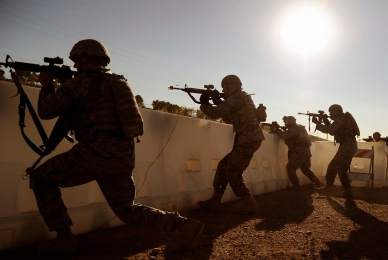77,000 military logs – published by WikiLeaks – have been used by analysts to successfully predict insurgent attacks against coalition forces in Afghanistan.
Using sophisticated algorithms, researchers at the University of Edinburgh projected that the number of incidents in the Baghlan province would increase from 100 in 2009 to 228 in 2010.
The actual number? 222.

”Modern conflicts are characterized by an ever increasing use of information and sensing technology, resulting in vast amounts of high resolution data. Modeling and prediction of conflict, however, remain challenging tasks due to the heterogeneous and dynamic nature of the data typically available,” researchers wrote in an PNAS article abstract.
“[Nevertheless], our results show that the approach allows deeper insights into conflict dynamics and allows a strikingly statistically accurate forward prediction of armed opposition group activity in 2010, based solely on data from previous years.”
In an ironic twist highlighted by Wired’s Robert Beckhusen, the Pentagon – which attempted to suppress the WikiLeaks documents – has itself spent millions developing less than stellar predictive tools.
“DARPA’s Integrated Crisis Early Warning System actually predicts few crises. Its predecessors, which date back to the 1980s, were arguably even more inaccurate,” Beckhusen writes.
“But those seek to predict big, sweeping geopolitical events. Researchers have had better luck estimating expected fatalities from the wars in Iraq and Afghanistan. But predicting violent events with news reports as data? Fail.”
Despite the above-mentioned prediction, University of Edinburgh researchers caution against jumping to conclusions in areas with high levels of volatility, suggesting that their model might be best suited to insurgent scenarios where violence is more sporadic.
“Simply stated, it might prove a better option to admit a large uncertainty about the future, than to base a policy decision on a highly uncertain prediction,” they added.






